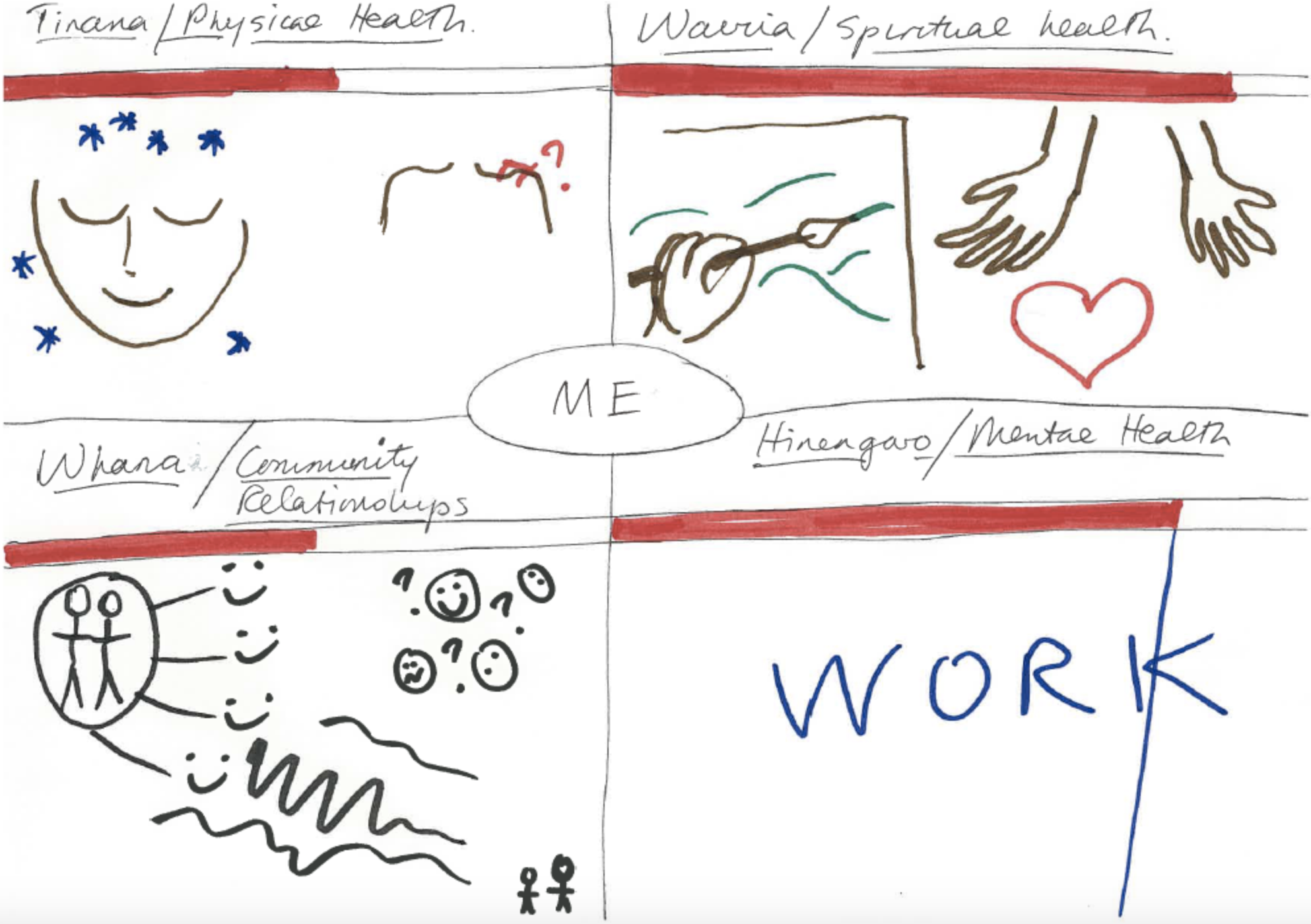Te Whare Tapa Wha – The House of Wellbeing
 This model of wellbeing draws from the wisdom of our indigenous Maori. It was conceptualised by psychiatrist Mason Durie and translates as ‘the house of wellbeing’. The house is a metaphor of the self and is held up by four pillars, all of which are crucial to overall well being. These are:
This model of wellbeing draws from the wisdom of our indigenous Maori. It was conceptualised by psychiatrist Mason Durie and translates as ‘the house of wellbeing’. The house is a metaphor of the self and is held up by four pillars, all of which are crucial to overall well being. These are:
Tinana/Physical: Everything that impacts on our physical health such as sleep, exercise, diet, pain, illness.
Whanau/Relationship: The quality of our relationships with others and also their relationships with each other.
Hinengaro/Mental: Our thought processes, such as planning, self-organising, prioritising, remembering, completing things, being focussed.
Wairua/Spiritual or Existential: Our feelings of meaning, values, connectedness, peace, compassion.
Using Tewhare Tapa Wha as a mapping and scaling exercise.
Imagine you are looking down on the house from above. Draw four quadrants on a piece of paper and label them with each aspect of wellbeing. They then scale your current state of wellbeing in each area by giving it a number between 1 (low) and 10 (high). It’s important to make it current, a snapshot. Then use the four boxes to draw or write about the things that influenced where you placed yourself on the scale. This provides of ways for us to explore what is impacting your wellbeing and what are the most effective ways to improve.
Above is an example of a House of Wellbeing mapping that I did for myself to illustrate this page. I was struck by how important to my whole sense of wellbeing it is that I am sleeping well at the moment (Tinana/Physical), despite having a sore shoulder. Wairau/spiritual health is represented by my drawing of holding a paintbrush. For me artistic expression is a deeply soulful activity and makes me feel open-hearted and generous. Things are often revealed that might not come out in the open so easily without this tool. For example another thing that I noticed about my own drawing today was the hands. Spirituality for me is ‘hands on’, directly felt, not an abstract thing. This has a link to my generally positive feelings about work today (Hinengaro/Mental quadrant). My four children are all doing OK at the moment but I am feeling a little out of touch with friends. (Whanau/Relationship)
The indigenous philosophy behind Tewhare Tapa Wha.
In New Zealand the Maori world view comes from this place underneath our own feet. I like the way this grounds the exercise right here and right now. Most people can think through their current physical, mental and relational health. Spiritual health is more challenging in the modern Western world, even those who belong to religions. This idea of Wairua seems to contain within it a sense of connectedness to the earth and living beings and to meaning beyond what the conscious, logical mind perceives. For me and I think many people with whom I work as a therapist, wellbeing in the Wairua quadrant helps to make sense of lives and challenges in the deepest way. I think traditional Western conceptions of mental health sometimes miss out Wairua. They are often too focussed on problems and pathologies and because of this are inadequate in helping make sense of existential issues like making meaning of the suffering that happens in all lives.
Te Whare Tapa Wha and Neuromodulation
Neurofeedback and other neuromodualtion technologies such as AVE, tDCS and tACS offered at Brainwise are focussed on healing the brain and nervous system – most clearly identified as the Tinana/Physical and Hinengaro/Mental pillars. The flow on effect of this often leads to improvement in relationships (Whanau) and a deeper sense of meaning about life as a whole (Wairua/Spirituality). Many people who are interested in meditation or other spiritual practices find that once they have done Neurofeedback, these are more satisfying.
It is important to recognise too that some problems lie outside the domain of the individual nervous system, such as toxic relationships that are out of our control, for example a substance abusing partner, warring parents or workplace bullying. These need to be addressed alongside any therapy.
